Sherman Institute (Indian Band Marching Field 1909)
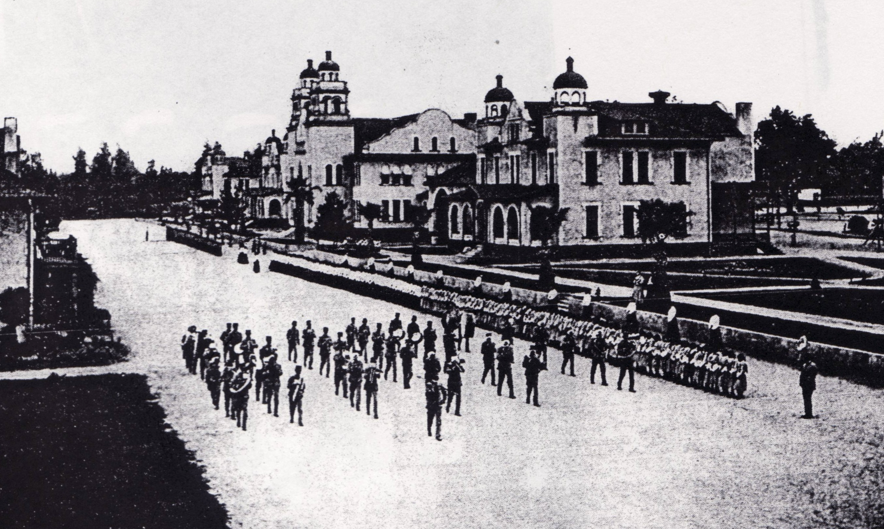 Sherman Institute 1909
Sherman Institute 1909
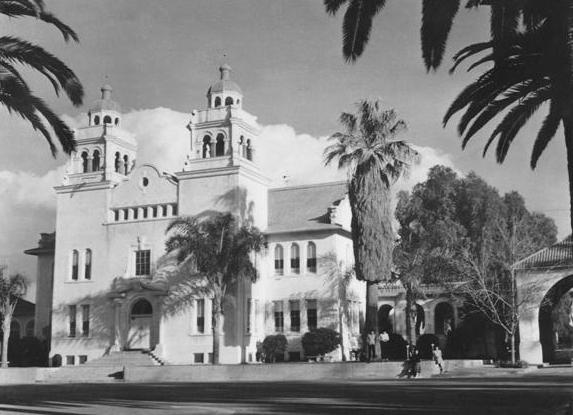 Some Hopi Indians were sent to Alcatraz for resisting the Assimilation of Education
Some Hopi Indians were sent to Alcatraz for resisting the Assimilation of Education
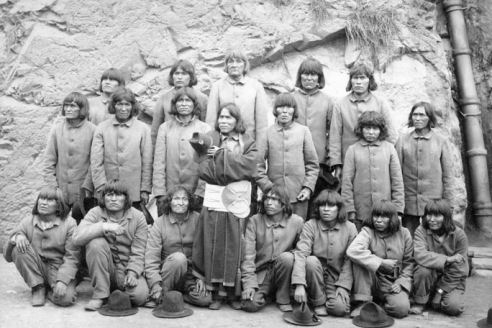
Sherman Institute - Arizona Hopi and Navajo Children
James Schoolcraft Sherman,(October 24, 1855 – October 30, 1912) Was Chairman of Indian Affairs -
He promoted the act that funded construction of the Sherman School. For 12 years he was chairman
of the House Committee on Indian Affairs.
Sherman Institute - Indian training school
On May 31, 1900, Congress authorized $75,000 for the construction of Sherman Indian School on
its present Riverside, CA. site.
California was admitted as the 31st state on September 9, 1850 and education slowly developed.
Among major exports from California, at least half of the fresh fruit produced in the United States
are cultivated in California, and it also leads in the production of vegetables. There was
a need to cultivate these crops as well as to bring Indians into the civilized world and
assimilate into the American Society.
Native Indian Boarding Schools
1880 - 1930 US Government Agents rounded up Indian Children to send them to compulsory schooling
(forced education) in which all American children were required to do however only Indian children
were removed from their families and sent to distant boarding schools. In 1902 there was a mandatory
enrollment of Hopi children to U.S. government schools. The Office of Indian Affairs opened the Sherman
Institute, one of the largest off-reservation boarding schools in the United States, as one of the
off-reservation Indian boarding schools. Some tribes resisted this new law however others embraced
it as a way of educating their youth. This was a way for the Americans to control the Indian people
as the children were seperated from their parents and tribes. There was a withholding of annuity
goods guaranteed by treaties to coerce parents to send their children to
boarding schools.
By 1902 the Government established 154 boarding schools. (twenty five were off-reservation) and
154 day schools for about 21,500 Native Americans.
In 1906, All Arizona Indian children of school age were required to go to school. They wre
lined up to be registered and taken away to school by U.S. government agents and military escort.
History
Sherman Indian High School (SIHS) Source: WIKI: is an off-reservation boarding high school
for Native Americans children of all ages. Originally opened in 1892 as the Perris Indian
School, in Perris, California with the purpose of training the Indian for American citizenship
and of American white society. The school was relocated to Riverside, California, in 1903,
under the name The Sherman Institute. The students would spend half the day in the classroom
and the other half learning a trade in a shop, farm or ranch with Christian principles applied.
The school program was a three year ciriculum without going back to the family. The school was
run with military disipline and the students wore uniforms and held different ranks with stripes
according to that rank. This was a military school.
With a total of 500 Indian students in attendance at Sherman Institute in 1906, the Hopi pupils
accounted for the second largest tribal representation at the school, second only to the so-called
"California Mission Indians. The Hopi's called this new Institute in Riverside, CA the land or Oranges.
The Sherman Institute boarding schools caused a shortage of male labor on Indian land as the boys
would work beside their fathers no longer and the "outing program" called a shortage of young female
women, a program to make civilized women which actually was for the use of domestic paid servants for
the rich Riverside white culture. Only practical labor skills and industrial training were taught in
the early days of the Sherman Institute The fields included agriculture, leather and metal work and
teaching and reinforcement of the value of earning and saving money.
In accordance with American Indian policies, Hopis could not become American citizens unless they
could read, write, and speak English.
The Sherman Institute had music typically centered on American and European selections ranging
from Bach, Mozart and American patriotic compositions considered to be civilized American culture.
Superintendent Harwood Hall wanted to promote Sherman Institute as a progressive, talented an
d enlightened institution and supported traditional Hopi songs and cultural ways with complete
native costumes which were preserved and practiced at the Sherman Institute as well as assimilating
the new songs of the Americans in hopes that patrons would help support this Native American cause.
(1906-1907)
In 1909, 43 tribes were represented on the school roll, with Indians not only from California,
but also from the Pacific Northwest, southwest, and the Plains. The grades taught were from one
to eighth grade. The children who attended the boarding school at the Institute were not allowed
to "mix" with the Riverside town children.
In 1912 the school had 631 pupils, who hailed from twelve states and represent fifty-five
tribes. The schools location in Riverside was chosen because of it was considered to be
located in the midst of people of the highest culture and refinement surrounded by positive
influcences in an environment of good weather with the school grounds proper containing forty
acres, beautifully landscaped with lawns and walks and ornamental trees, amid which were
located thirty-five buildings of the Mission styles of architecture. The course of study
provided carries the student through the eighth grade, and those who desire can enter the
high school of business college of Riverside. Also available were several industrial courses
placed upon an equal plane with academic. The boys are taught carpentry, blacksmithing,
wagon making, shoe and harness shops, tailoring, agriculture, home economics, home nursing,
printing and other trades as the girls trained in sewing, general housekeeping, laundered
clothes and linens; and nursing. Additional training was done on a hundred acre farm owned
by the Government in which the students would learn how to become farmers learning dairy
work and vegetable growing which was also used by the school.
The Hopi Indian children in northeastern Arizona graduated from the Sherman Institute.
Hopi Indians Snake Kiva Oraibi Pueblo
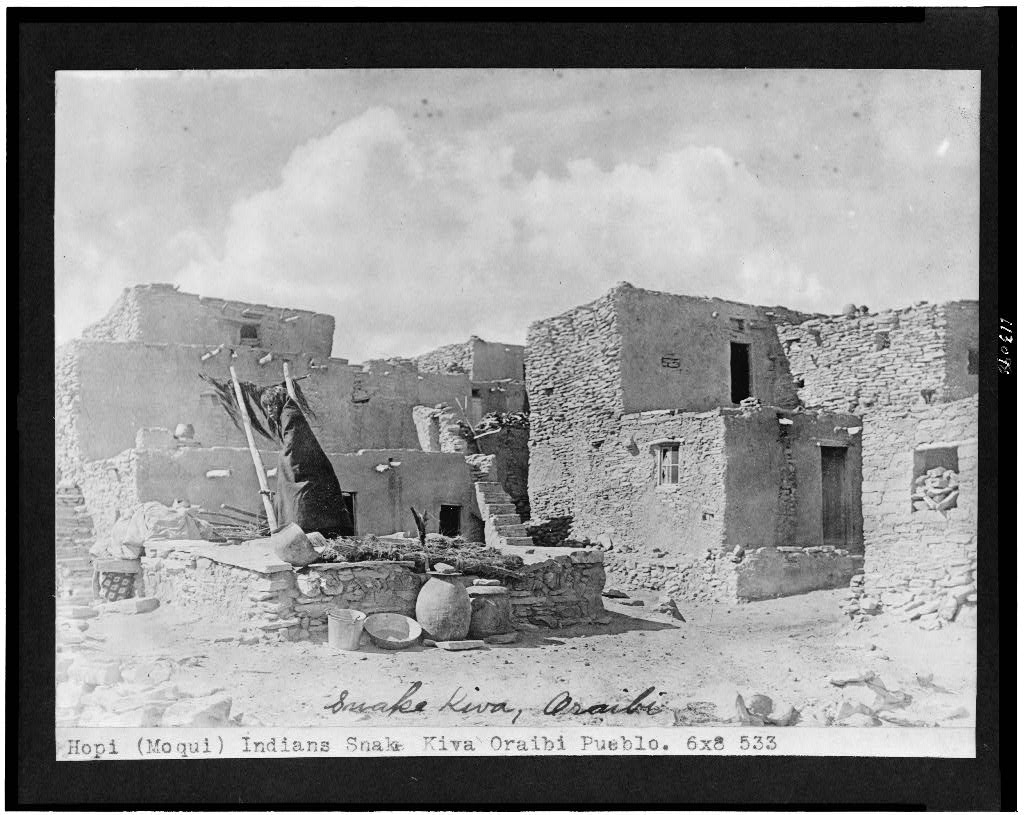
The Hopi People
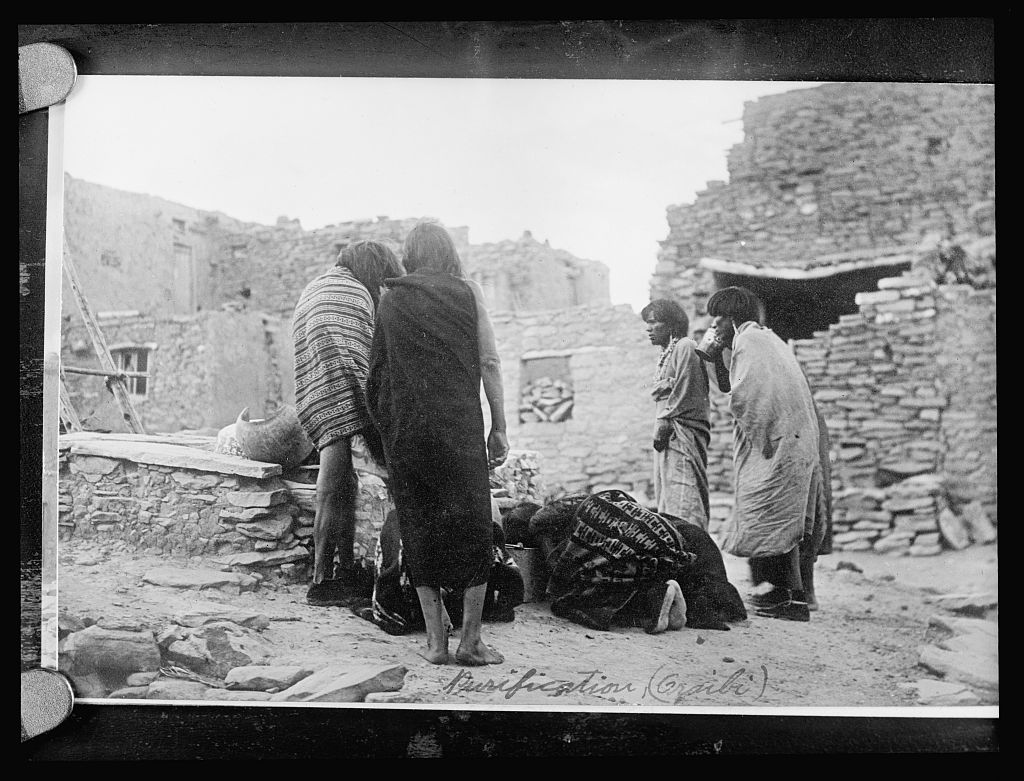
1912 Indian Head Gold Half Eagle Coin
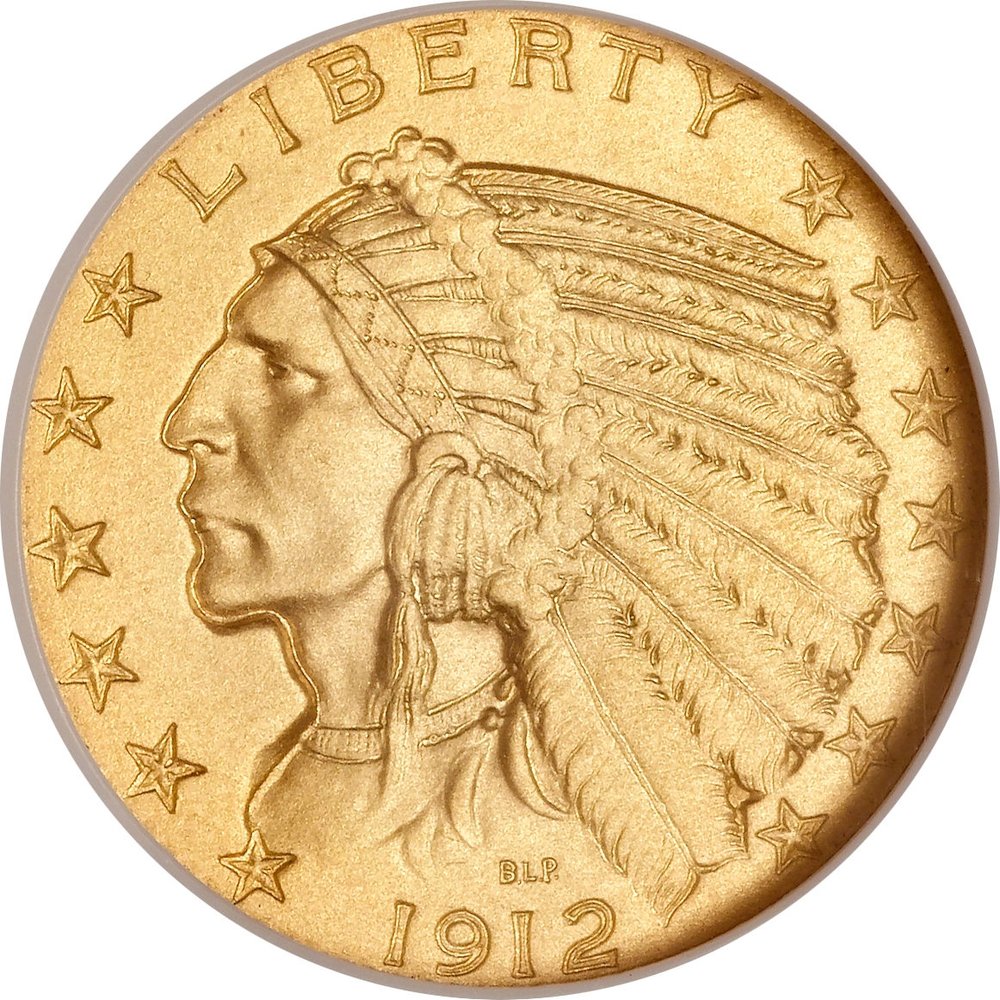
Indian chief in full headdress - Designer: Bela Lyon Pratt - 1908-1929 Gold 90% Indian Head
Gold Piece Half Eagle - Design and inscriptions sink below the surface of the coin. On the reverse
was an eagle in repose, instead of the standard spread-winged eagle.
The Sherman Bulletin - 1920
Valedictory by Leona LeSieur
A snippet from the end of this Valedictory article from 1920:
"How different is our case from that of our white brother and sister graduates. They are under
a certain obligation to their parents, the people in their community and their race in
general. The Indian owes nothing in particular to his parents, nor to the members of his
tribe. No high standard of any kind has been set before him; there is no inducement but to
follow the same routine that has been the custom for generations. For this new task our minds,
hand and hearts have been trained and praises to be to our beneficent government and the
efficient and painstaking faculty for making possible the pursuit of these arts, the arts
that differentiate the civilized from the savage man; the arts that make life sweet and
beautiful; the arts that make, provide and adorn the home; that render the earth fertile
and make it blossom as the rose; the arts that promote man's brotherhood by enlarging his
neighborhood -- these are the arts that should inspire us with just and generous impulses;
arts in which the noblest moral sentiments are made manifest in the every day things in life."
Among others, the Hopi youth learned the ways of European-American civilization with a price.
The Sherman Indian High School had the requirement that the children must only speak English
and were not able to learn their traditional native ways. The children were forced to abandon
their tribal identity and completely take on the European-American culture. They received
haircuts, new clothes "sometimes military type attire", took on Anglo names, and learned English.
The boys learned farming and carpentry skills, while the girls were taught ironing, sewing
and "civilized" dining. The boys were seperated from the girls. Anglo American religion,
Christiananity was taught. In 1924 Congress officially declared Native Americans to be U.S
citizens.
The Hopi pupil incorporated their culture to succeed in music, agriculture, trade, sports,
and laguage acquisition. Membership in the band and athletic programs provided respites from
tedious school routines and a chance to play against the whites and show their athletic skills.
When they returned home they were able to contribute with the knowledge
they learned from the Sherman Institute to give back to their community. By 1926, Sherman Institute
offered a complete elementary and high school curriculum, as well as a course in cosmetology.
The enrollment had reached 1,000 students. An enrollment of 1,256 was recorded in 1930, and
in 1932 Sherman became an accredited high school.
In 1946 the desperate need for education among the Navajos guaranteed the continuance of Sherman
as an educational institution. October 1946 marked the opening of the Special Program to 350
Navajo young people, age 12 to age 20, who had never experienced a formal education. The Special
Program was in operation for more than 15 years.
In the fall of 1963 the ninth and tenth grades were revived. Sherman re-opened enrollment to
other tribes, including California Indian tribes. The school again moved in the direction of
a high school program, adding a grade each year until the school began graduating classes in 1966.
In 1967 eight buildings were deemed unable to withstand a major earthquake. One of the last
buildings to be razed was the old school building in 1970. The old cornerstone from this
building and its contents were saved and placed in Sherman Museum (old Administrative Building).
The Administration building was saved and made into a museum and has been in that status since
the early 1970's.
When the school was accredited by the Western Association of Schools and Colleges in 1971,
it become known as the Sherman Indian High School.
Operated by the Bureau of Indian Education/Bureau of Indian Affairs and the United States
Government Department of the Interior, the school now serves grades 9 through 12. The schoo
l mascot is the Brave and the school colors are purple and yellow. There are 7 dormitory
facilities on the SIHS grounds. The male facilities are Wigwam, Ramona, and Kiva. Female
facilities are Wauneka, Dawaki, and Winona. The last dorm is a transition dorm, Hogan.
In addition to the seven dorms, there is also a set of 13 honor apartments named Sunset.
Only 4 dorms are available for students to live in including Wigwam, Kiva, Dawaki, Ramona,
and Winona
According to the Sherman Indian Museum, SIHS was founded by the United States Government
in order to assimilate Native Americans into the mainstream society.
SIHS was originally known as the Perris Indian School, which was established in 1892 under
the direction of Mr. M. S. Savage. This was the first off-reservation Indian Boarding School
in the state of California. The enrollment then consisted of Southern California Indian children
from the Tule River Agency to San Diego County. Students ranged in age from 5 years old to
early 20s. The main subjects taught were agriculture and domestic science.
The 80-acre site in Perris, California was at the corner of today's Perris Boulevard and Morgan
Street. Due to an inadequate water supply to conduct the primary subjects at the school, a
better location was sought. By 1901 a site in the City of Riverside was selected, at the corner
of Magnolia Avenue and Jackson Street. On July 19, 1901, the cornerstone was laid for the new
school building of Sherman Institute. That cornerstone is now available for viewing at the
Sherman Indian Museum on the grounds of the Sherman High School. The Perris Indian School
remained in operation until December 1904 when the remaining students were transferred to
the Riverside School.
The Mission Revival Style Spanish architecture was considered a novelty when the school was built,
and the city promoted the school as one of the landmarks to visit by tourists as well as
the Mission Inn. To meet earthquake standards, most of the original school buildings were
demolished during the 1970s, and new structures were built in their place. The California
Native Tribes were required to pay for the demolition and for the new buildings.
During the 2008-09 school year, SIHS administration removed more than 30 staff from their
facility, upsetting the students. The students protested, to no effect. Officials stated that
there were not enough BIA funds to pay the employees that had been let go.[citation needed]
That same year, traditional ceremonies for the school's annual spring pow-wow were replaced
with Christian prayers.
Sherman Indian Museum
9010 Magnolia Avenue, Riverside, CA 92503
951-276-6719
Sherman Indian Museum
Museum Hours are Tuesday, Wednesday and Thursdays from 1:00pm to 4:30pm. All other times
are by appointment.
The Sherman Museum and one outbuilding are currently the school's only original architecture;
The museum was once the school's administration building and can be visited from Magnolia
Avenue during open hours as it is a museum. The Riverside National Register of Historic Places
made the administration building, now a museum a Historical landmark in 1980 as #16 on the registry.
When visiting the museum you can view photographics of the original school/institute
structures all done in the Mission Revival Style that Riveride is known for with its tile
roofs and facades resembling the California 19th century Spanish missions in California.
The museum houses records from the school's early days to the present. Over 2,000 catalogued
items or artifacts of American Indian origin are housed there. These items were acquired
from friends of the school and museum.
The Sherman Museum on 9010 Magnolia Avenue is considered the last of the thirty-four Mission
Revival buildings that comprised Sherman Institue, this structre was built as the Administration
Building in 1901. The federal Indian school was named for James Schoolcraft Sherman, Chairman
of Indian Affairs, U.S. House of Representatives, who later became vice president of the
United States under President William H. Taft promoted the act to fund the schools construction.
The Sherman Indian Museum is dedicated to the history of Native Americans. Houses traditional
Native American art and history exhibits.
Sherman Indian High School
9010 Magnolia Avenue, Riverside, Ca. 92503
Sherman Indian High School (SIHS)
Sherman Indian High School
The mission of the school has changed since its inception early in this century. Founded as
an agricultural and trade school, Sherman evolved into a comprehensive high school serving
9th thru 12th grade students in order to better meet the needs of all Native American youth.
In 1970, Sherman was accredited as a secondary school accepting student from across the nation.
Sherman was initially accredited as a comprehensive high school in 1995 by the Western Association
for Schools and Colleges, WASC.
This school is for American Indians as an off-reservation boarding school giving them opportunities
that they would have on the reservation. Many on hands trades are taught in these school programs
as part of a career technical educational program.
The academics offer a College Prep Program (A-G approved coursework) which are accredited to
California State Standards.
Career Pathways:
The San Manuel Band of Mission Indians announced a commitment of $2.5 million to a program of
career technical instruction offered by the Riverside County Office of Education (RCOE) for
students of Sherman Indian High School. A press conference and announcement was held at the
school in Riverside this morning and included officials from San Manuel, the United States
Department of the Interior, RCOE and Sherman Indian High School administration and foundation
and concluded immediately before the school's graduation ceremony.
A unique partnership of tribal, school and county entities was forged to address a need for
Native American students to develop career pathways that will contribute to new opportunities
for Native students and continued economic development of Native American communities A forward
thinking program, the career pathway includes an energy and utilities component that includes
a "green" jobs program, preparing students in the emerging renewable energy industry.
"Education, employment and a sense of identity can prepare Native students to overcome negative
obstacles which disproportionally affect Native Americans," said Chairman James Ramos. "Native
peoples on a whole face disparities in health, employment and community development. It is our
hope that the pathways set out through this partnership will enable these students to make a
brighter future through increased employment opportunities."
The 2000 Census data show 25.9% of all American Indians and Alaska Natives are living below
the poverty line. In contrast, the national poverty rate was 12.4% .
Vocations - Career Paths:
There are five career industry pathways to be brought to the Sherman High School. They will
be health sciences, public services, hospitality tourism and recreation, energy and utilities,
and agricultural and natural resources.
Current Day:
At present, Sherman High School hosts an average of 300 to 500 students who come from
reservations spanning the United States. Any student who is a tribal member of a federally-recognized
tribe with at least one-fourth blood quantum may apply to attend. The school is funded entirely
by the United States Department of the Interior, Bureau of Indian Affairs, and the Bureau of
Indian Education. Attendance is free of charge.
Sherman Indian Foundation
Hopi Indians - Indigenous people
Sherman Institute - Indian Cemetery
12891 block of Indiana Avenue, Riverside, CA
THE AMERICAN INDIAN: GOVERNMENT EDUCATION - The original Sherman School is shown in this video
- National Archives and Records Administration 1953
http://www.youtube.com/watch?v=sdtm3546GkM
Mariposa County - History and Genealogy Research - Sherman Institute by E. W. Holmes -
"An accounting of the Sherman Institute in 1912"
http://www.mariposaresearch.net/SIhistory1912.html
The Battle of the Children
http://digitalcommons.unl.edu/cgi/viewcontent.cgi?article=1002&context=historyfacpub
Education Beyond the Mesas
http://beyondthemesas.com/tag/indian-boarding-school/